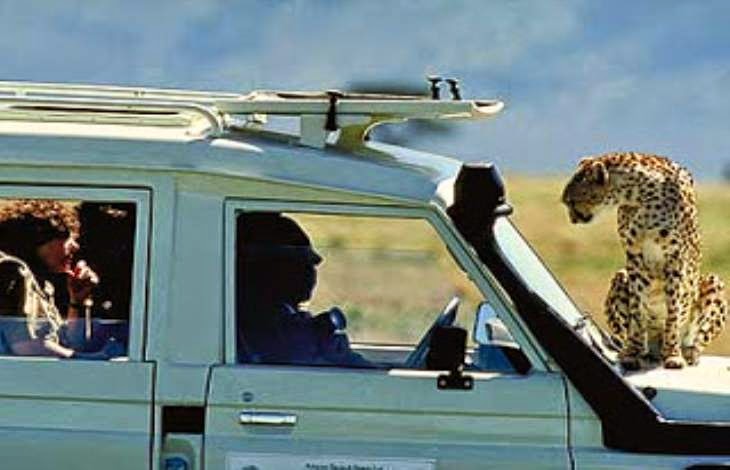The Maasai people of East Africa live in southern Kenya and northern Tanzania along the Great Rift Valley on semi-arid and arid lands. The Maasai occupy a total land area of 160,000 square kilometers with a population of approximately half a million people. However, many Maasai see the national census as government meddling and often miscount their numbers to census takers.
Maasai Mara National Reserve
The Maasai Mara is one of the best known and most popular reserves in the whole of Africa. At times and in certain places it can get a little overrun with tourist minibuses, but there is something so special about it that it tempts you back time and again.
Seasoned safari travelers, travel writers, documentary makers and researchers often admit that the Masai Mara is one of their favourite places. This, perhaps, is because of the 'big skies', the open savannahs, the romance of films like Out of Africa and certainly because of the annual wildebeest migration, the density of game, the variety of birdlife and the chance of a hot air balloon ride.
Also because of the tall red-robed Maasai people whose lifestyle is completely at odds with western practices, and from whom one learns to question certain western values. A combination of all these things plus something to do with the spirit of the place - which is hard to put into words - is what attracts people to the Mara over and over.
The Maasai Mara lies in the Great Rift Valley, which is a fault line some 3,500 miles (5,600km) long, from Ethiopia's Red Sea through Kenya, Tanzania, Malawi and into Mozambique. Here the valley is wide and a towering escarpment can be seen in the hazy distance. Most of the game viewing activities occur on the valley floor, but some lodges conduct walking tours outside the park boundaries in the hills of the Oloololo Escarpment. The animals are also at liberty to move outside the park into huge areas known as 'dispersal areas'. There can be as much wildlife roaming outside the park as inside. Many Maasai villages are located in the 'dispersal areas' and they have, over centuries, developed a synergetic relationship with the wildlife.
There are four main types of topography in the Mara: Ngama Hills to the east with sandy soil and leafy bushes liked by black rhino; Oloololo Escarpment forming the western boundary and rising to a magnificent plateau; Mara Triangle bordering the Mara River with lush grassland and acacia woodlands supporting masses of game especially migrating wildebeest; Central Plains forming the largest part of the reserve, with scattered bushes and boulders on rolling grasslands favoured by the plains game.
There are two major seasons in the Mara: the rainy season and the dry season. It rains in April and May and again November and this can cause some areas of the Mara to be inaccessible due to the sticky 'black cotton' mud. The dry season is from July to October when the grass is long and lush after the rains. This is a good time to come and see the huge herds of migratory herbivores.
The Maasai Mara climate is somewhat milder and damper than other regions because of its high altitude: 4,875 - 7,052 feet (1,500 - 2,170 metres) above sea level. The tempearture rarely exceeds 85°F (30°C) during the day and hardly ever drops below 60°F (15°C) at night. Tourists looking forward to a summer-like weather will visit in December and January because both months are the warmest time of the year. However, June and July are the coldest months in the Mara.
As a matter of fact, tourists to Maasai Mara will be happy to partake in any of its specialties viz:
- Wildebeest Migration
- Hot Air Ballooning
- Huge savannahs of golden grasslands
- Big skies
- Rift Valley escarpment
- Lion sightings
Photo Credits: Maasai Association, Journey Mart, Google
Sources: Game-Reserve.Com, MaasaiMara.Com, Maasai Association, Journey Mart, Wikitravel



















0 comments:
Post a Comment